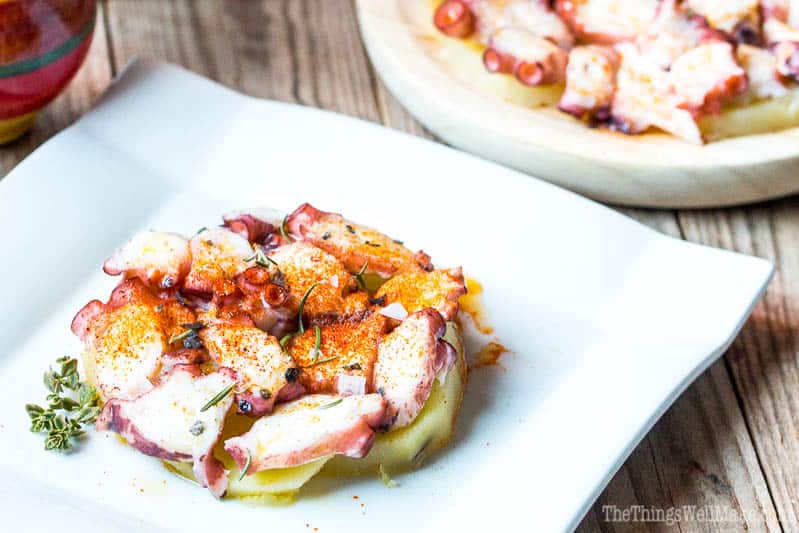Pulpo a la Gallega (Galician Style Octopus) - Slow Cooker Method
4.8
(8)
Your folders
Your folders
Author : Tracy Ariza, DDS

Ingredients
Export 4 ingredients for grocery delivery
Instructions
Step 1
Cut the head off the octopus at its base. Discard it or use it for something else, if you can find a use for it.
Step 2
To keep the skin on the octopus while you cook it, it's a good idea to "shock" it first by dipping it a few times in boiling water. Boil your water and dip the octopus into the water for 10-20 seconds, and then remove it. Repeat the process twice more until the legs of the octopus curl up.
Step 3
Now you can either cook it over the stovetop or in your slow cooker. If you plan to cook it on the stovetop, add the octopus to your boiling water.For the slow cooker method, add your octopus to your slow cooker and fill with enough water to cover it.
Step 4
For the stovetop method, continue to boil the octopus for around 45 minutes, until tender.
Step 5
Slow cooker: Cook for around the suggested cooking times of your particular slow cooker. Mine takes about 5 hours at the high position or 8 hours at low. I used the high position, but I'm guessing that you could use either, depending upon which is most convenient for you. You can check the octopus for tenderness by sticking a fork in the thickest part of the legs.
Step 6
To make the boiled potatoes, it's a good idea to cook them separately in fresh water. If you use the same water, your potatoes will take on a purple color.Serving the pulpo a la Gallega with boiled potatoes is traditional, but optional. My favorite Galician restaurant serves them without.
Step 7
When you have achieved the desired tenderness, take your octopus out of the water, and place on a cutting board.
Step 8
Thinly slice the potato, if you are using one, and lay the slices out on your serving plate.
Step 9
Separate the octopus legs, and thinly slice them. Position them over the potato slices or directly on your serving plate.
Step 10
Drizzle the octopus with a high quality extra virgin olive oil.
Step 11
Sprinkle on a little salt and a little bit of paprika. Here in Spain, they usually use a combination of a sweet and a hot paprika for pulpo a la Gallega.